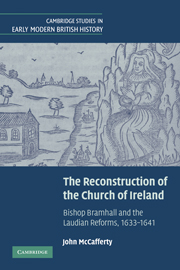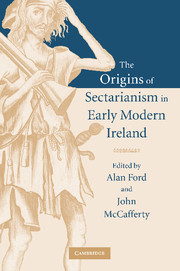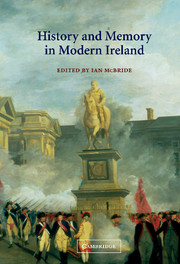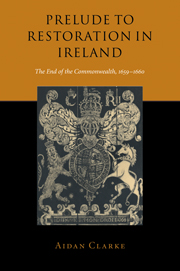The Reconstruction of the Church of Ireland
Thomas Wentworth landed in Ireland in 1633 - almost 100 years after Henry VIII had begun his break with Rome. The majority of the people were still Catholic. William Laud had just been elevated to Canterbury. A Yorkshire cleric, John Bramhall, followed the new viceroy and became, in less than one year, Bishop of Derry. This 2007 study, which is centred on Bramhall, examines how these three men embarked on a policy for the established Church which represented not only a break with a century of reforming tradition but which also sought to make the tiny Irish Church a model for the other Stuart kingdoms. Dr McCafferty shows how accompanying canonical changes were explicitly implemented for notice and eventual adoption in England and Scotland. However within eight years the experiment was blown apart and reconstruction denounced as subversive. Wentworth, Laud and Bramhall faced consequent disgrace, trial, death or exile.
- Was the first book-length study of the Church of Ireland in the 1630s
- A major contribution to debates about the trajectory of religious change in the decades before the Civil War
- Takes a 'Three kingdoms' approach including comparisons with policy in England and Scotland
Reviews & endorsements
Review of the hardback: 'McCafferty's analysis of the Irish Reformation is compelling, and the research underpinning it is impressive especially given the deficient state of the Irish ecclesiastical archives.' Journal of Ecclesiastical History
Review of the hardback: 'John McCafferty's industriously researched and judiciously argued monograph offers a powerful, wide-ranging, and compelling account of the Laudian reforms that is unlikely to be superseded. He is meticulous and imaginative in his use of surviving sources that are often either fragmentary or technically demanding. He combines this with a very thorough reading of the voluminous correspondence of the lord deputy, Thomas Wentworth; Archbishop William Laud; and, most of all, the agent who stood at the heart of the reform program, John Bramhall, bishop of Derry. All this helps McCafferty to create a fascinating and illuminating study of policy formulation and implementation that shows a thorough understanding both of the sometimes complex motivation of the policymakers and of the messy reality of their policies on the ground.' The Catholic Historical Review
Product details
July 2007Hardback
9780521643184
288 pages
235 × 162 × 25 mm
0.598kg
Available
Table of Contents
- 1. Introduction
- 2. The temporalities campaign, 1633–40
- 3. The convocation of 1634 and its aftermath
- 4. Mechanisms of reconstruction and the problem of dissent
- 5. Downfall of the settlement, 1640–1
- 6. Conclusion
- Appendix: three letters
- Bibliography
- Index.








